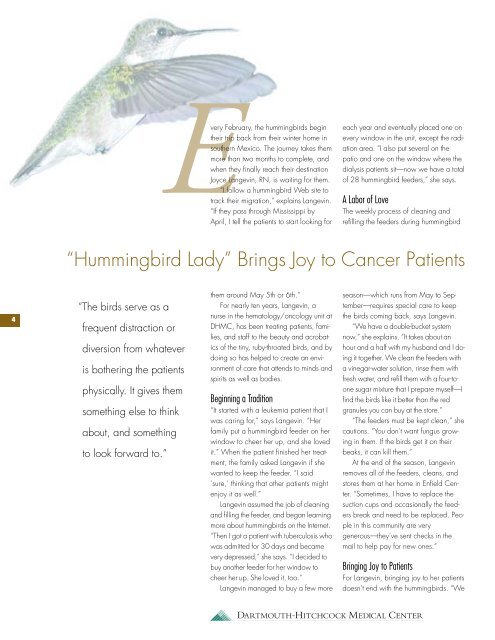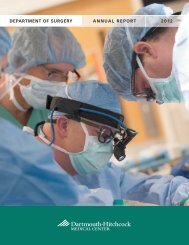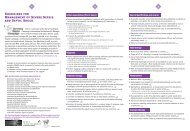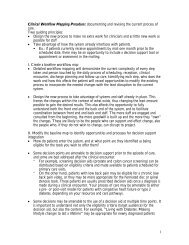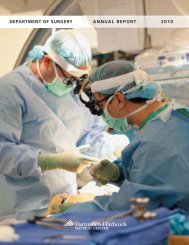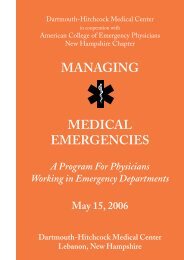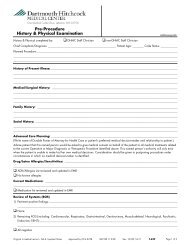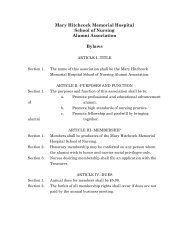Caring - Dartmouth-Hitchcock
Caring - Dartmouth-Hitchcock
Caring - Dartmouth-Hitchcock
You also want an ePaper? Increase the reach of your titles
YUMPU automatically turns print PDFs into web optimized ePapers that Google loves.
4<br />
Every February, the hummingbirds begin<br />
their trip back from their winter home in<br />
southern Mexico. The journey takes them<br />
more than two months to complete, and<br />
when they finally reach their destination<br />
Joyce Langevin, RN, is waiting for them.<br />
“I follow a hummingbird Web site to<br />
track their migration,” explains Langevin.<br />
“If they pass through Mississippi by<br />
April, I tell the patients to start looking for<br />
them around May 5th or 6th.”<br />
For nearly ten years, Langevin, a<br />
nurse in the hematology/oncology unit at<br />
DHMC, has been treating patients, families,<br />
and staff to the beauty and acrobatics<br />
of the tiny, ruby-throated birds, and by<br />
doing so has helped to create an environment<br />
of care that attends to minds and<br />
spirits as well as bodies.<br />
Beginning a Tradition<br />
“It started with a leukemia patient that I<br />
was caring for,” says Langevin. “Her<br />
family put a hummingbird feeder on her<br />
window to cheer her up, and she loved<br />
it.” When the patient finished her treatment,<br />
the family asked Langevin if she<br />
wanted to keep the feeder. “I said<br />
‘sure,’ thinking that other patients might<br />
enjoy it as well.”<br />
Langevin assumed the job of cleaning<br />
and filling the feeder, and began learning<br />
more about hummingbirds on the Internet.<br />
“Then I got a patient with tuberculosis who<br />
was admitted for 30 days and became<br />
very depressed,” she says. “I decided to<br />
buy another feeder for her window to<br />
cheer her up. She loved it, too.”<br />
Langevin managed to buy a few more<br />
each year and eventually placed one on<br />
every window in the unit, except the radiation<br />
area. “I also put several on the<br />
patio and one on the window where the<br />
dialysis patients sit—now we have a total<br />
of 28 hummingbird feeders,” she says.<br />
A Labor of Love<br />
The weekly process of cleaning and<br />
refilling the feeders during hummingbird<br />
“Hummingbird Lady” Brings Joy to Cancer Patients<br />
“The birds serve as a<br />
frequent distraction or<br />
diversion from whatever<br />
is bothering the patients<br />
physically. It gives them<br />
something else to think<br />
about, and something<br />
to look forward to.”<br />
season—which runs from May to September—requires<br />
special care to keep<br />
the birds coming back, says Langevin.<br />
“We have a double-bucket system<br />
now,” she explains. “It takes about an<br />
hour and a half with my husband and I doing<br />
it together. We clean the feeders with<br />
a vinegar-water solution, rinse them with<br />
fresh water, and refill them with a four-toone<br />
sugar mixture that I prepare myself—I<br />
find the birds like it better than the red<br />
granules you can buy at the store.”<br />
“The feeders must be kept clean,” she<br />
cautions. “You don’t want fungus growing<br />
in them. If the birds get it on their<br />
beaks, it can kill them.”<br />
At the end of the season, Langevin<br />
removes all of the feeders, cleans, and<br />
stores them at her home in Enfield Center.<br />
“Sometimes, I have to replace the<br />
suction cups and occasionally the feeders<br />
break and need to be replaced. People<br />
in this community are very<br />
generous—they’ve sent checks in the<br />
mail to help pay for new ones.”<br />
Bringing Joy to Patients<br />
For Langevin, bringing joy to her patients<br />
doesn’t end with the hummingbirds. “We


